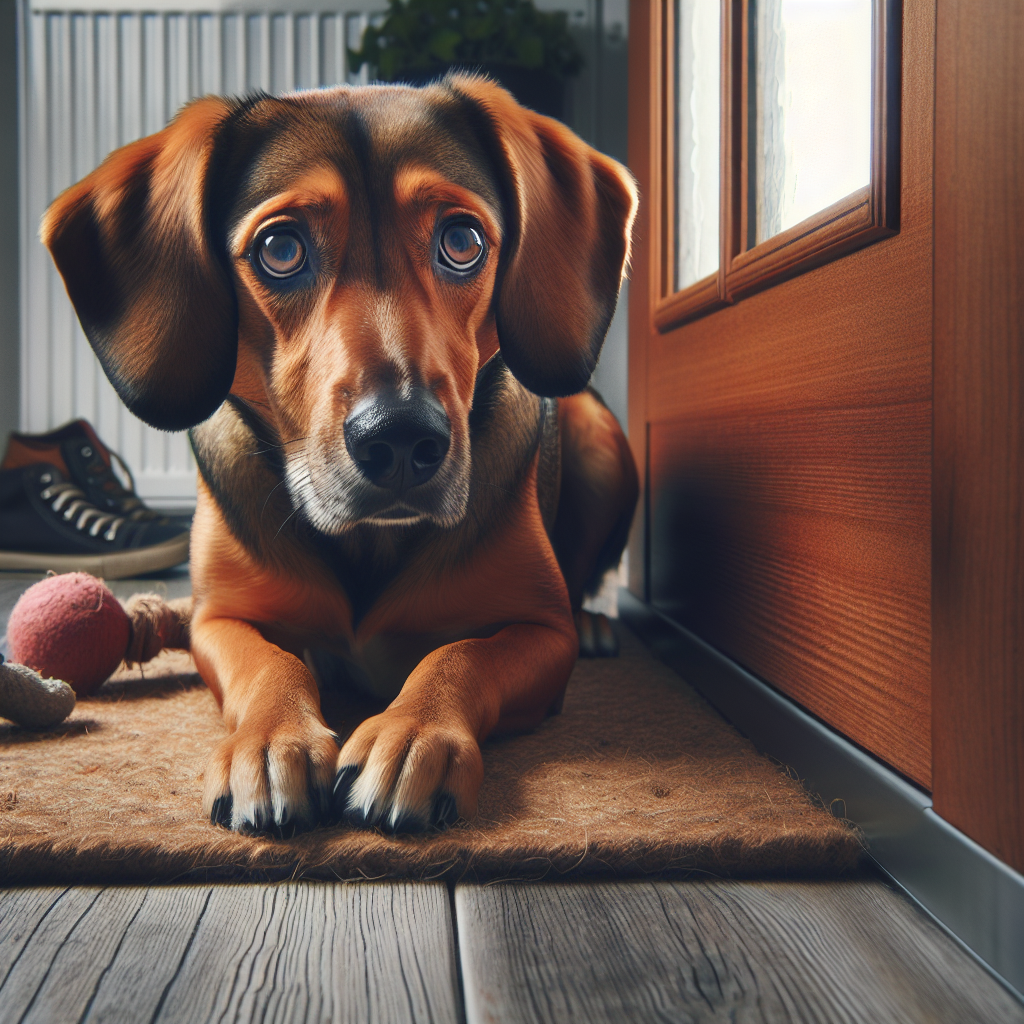Understanding Separation Anxiety in Dogs
It's heart-wrenching to think of your beloved canine pal feeling stressed and anxious every time you leave the house. This condition, known as separation anxiety, is a common issue that many dog owners encounter. This guide will delve into the signs, causes, and solutions to help your furry friend conquer this distressing issue.
Identifying Separation Anxiety
First, it's essential to recognize the signs that your dog is suffering from separation anxiety. These can vary in severity and may include actions like excessive barking or howling, restlessness, destructive behaviour, and accidents within the home. Recognizing these symptoms early is paramount to easing their anxiety and ensuring their overall wellbeing.

Causes of Separation Anxiety in Dogs
Several factors can trigger separation anxiety in dogs, including a change in routine or environment, a traumatic event, or loss of a family member. Dogs are social animals and naturally seek companionship, so being alone can be inherently stressful. You can read more about dog's natural behaviour and patterns at our Understanding Dog Behavior page.
Strategies to Alleviate Anxiety
To help your dog cope with separation anxiety, it's vital to address the underlying causes and implement training techniques to alleviate their stress. These techniques also aid in resolving other behavior issues. You can find more details on our Specific Behavior Issues Resolution page. Here are some strategies that you can use:
Establish a Regular Routine:
Dogs thrive on routine and predictability. Regular feeding, walking, playtime, and rest periods can help your dog feel more secure and less anxious when you're not around.
Gradually Acclimate Them to Being Alone:
Gradually getting your dog used to being alone can be key in managing separation anxiety. You can start by leaving your dog alone for short periods, gradually increasing the duration over time.
Train Them to Associate Your Departure with Good Things:
Providing a treat or toy before you leave can help create a positive association, countering the anxious feelings your dog may have with your departure.
Professional Solutions
If your dog's separation anxiety is severe or persistent, it might be time to consider additional professional solutions, such as therapy or medication. Consulting your vet or a professional dog behaviourist can provide individualized solutions that suit your pet's unique needs. The article on Today's Veterinary Practice offers some insights into professional solutions for canine separation anxiety.
Recommended Products for Separation Anxiety
There are various products on the market designed to help dogs cope with separation anxiety. Here are some highly recommended ones:
Helping Your Canine Companion
With patience, understanding, and the right strategies, it's possible to manage and even overcome separation anxiety in dogs. Whether you're leaning more towards simple adjustments or consider major changes, always keep in mind your pet's happiness and wellbeing. Hopefully, this guide has given you a better understanding of the problem and how you can offer comfort to your canine friend.
Navigating Canine Comfort
Understanding and navigating your dog's separation anxiety is no easy task, but remember that you are not alone in this journey. By employing a compassionate approach, seeking professional advice when needed, and utilizing various treatments and products, you can help your dog feel safe and secure even when you're not around. With time and patience, you'll see improvements, contributing to a happier and healthier life for your pet.